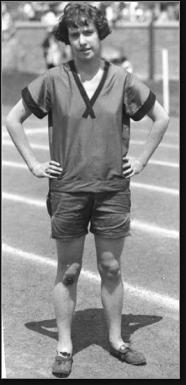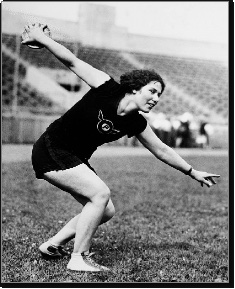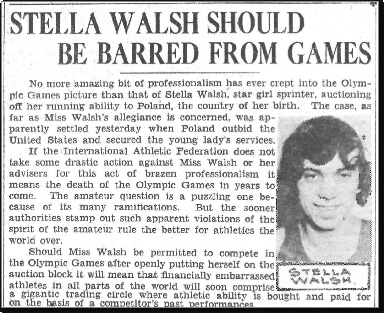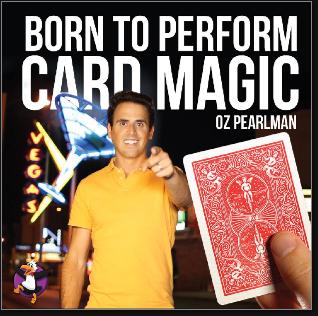FIRST WOMEN’S OLYMPIC TRIALS

The Amateur Athletic Union (AAU) held its Women’s Outdoor Track & Field Championships in New Jersey six times: in 1928, and 1931, from 1940 to 1942, and again in 1958. In 1928, the U.S. Olympic Committee selected Newark as the site of the first-ever Olympic Track & Field trials for women. Prior to 1928, the Summer Games did not include women’s Track & Field; the events were considered “dangerous” and “unhealthy” for female athletes. The 1928 trials were held at Newark’s City Field on July 4th and doubled as the annual AAU meet. Also know as Schools Stadium, the venue was located in the city’s Roseville section and held 25,000 fans.
Four of the 12 events were used as Olympic qualifiers: 100 and 800 meter runs, high jump and discus. 20-year-old Elta Cartwright (right) of the Northern California Athletic Club won the 100 meters with a time of 12.4 seconds. Betty Robinson, a high-school student from Illinois, finished second. Stella Walsh, usually a dominant sprinter. was eliminated in the semifinals. Cartwright was nicknamed “Cinder-Elta” (sprints in those days were run on cinder tracks). She also won AAU titles in the 50-yard dash and long jump. Meet rules prevented her from competing in more than three events.
The 800m crown went to Rayma Wilson, a teenager who ran for the Pasadena Athletic & Country Club and would later compete for UCLA. She set a national record with a time of 2:30.2. She also won the AAU title in the 300 meters. Mildred Wiley, who was also a competitive swimmer, won the high jump. She was the AAU’s reigning indoor champion, having won the title in 1927 and earlier in 1928. It took a “jump-off” in Newark with Jean Shiley to determine the winner, though both women went to Amsterdam that summer with the US team.

Maybelle Reichardt (left) won the discus competition by more than a foot and a half. Reichardt, who had been AAU champion in 1925, hadn’t competed in the event in several years. She had turned her attention to basketball, and was one of the top women players in the country. In 1926, her Los Angeles Athletic Club team won the national championship. The second-place finisher, Lillian Copeland, was also a major talent in tennis and basketball, as well as the javelin and shot put. She ranked among America’s top Jewish athletes. She won the shot put at the Newark meet.
Other AAU winners in Newark included Florence Wright in the 220 meters, Helen Filkey in the hurdles, Margaret Jenkins in the javelin and Vivian Hartwick in the baseball throw (228’ 8.5”) which was a sanctioned AAU event from 1923 to 1957. The 4×110 yard relay was won by Elta Cartwright’s Northern California Athletic Club squad.

At the Olympics in Amsterdam—held between July 28th and August 12th—Cartwright became ill and did not qualify for the finals. Betty Robinson, age 16, finished the final heat ahead of two Canadians to win the gold medal in the 100 meters. She was also a member of the U.S. 4×100 relay squad, which won a silver medal. Robinson returned to the Olympics in 1936 and won a second gold medal in the relay. Stella Walsh, who had emigrated from Poland at age 2, went on to become the leading female sprinter during the 1930s, competing for Poland in international meets. Upon her death in 1980, Walsh was found to be gynandromorphic, meaning she had mixed sexual organs—which explained the persistent rumors that she was a man competing as a woman.
Rayma Wilson was outclassed in Amsterdam by the other 800m runners, failing to make the finals. She had a successful track career at UCLA and joined the military at age 32 with the WAVES. She rose to the rank of lieutenant. Mildred Wiley tied for second in the high jump in the Summer Games with Dutch gym teacher Lien Gisolf. She lost a “jump-off” to Gisolf and settled for bronze. After retiring from athletics, Wiley married and had five children, including Bob Dee—a four time All-Star for the Boston Patriots during the 1960s. Maybelle Reichardt finished seventh in the discus—the first women’s track event in Olympic history. The silver medalist was Lillian Copeland, who finished behind Halina Konopacka of Poland.
The 1931 AAU meet took place on July 25th at Pershing Field, along Summit Avenue in Jersey City Heights. More than 230 athletes participated, including eight women who earned spots a year later on the Olympic team. The star of the 1931 meet was Babe Didrikson, a Dallas teenager who shattered the world record in the 80m hurdles, won the long jump, and tossed a baseball 296 feet (which is arguably still a record for women).
Stella Walsh, by now the sport’s dominant sprinter, won just one event, the 220m. She finished second to Jersey Girl Eleanor Egg, who was running for the Duffy League club, in the 100m. Jean Shiley won the high jump, Lillian Copeland won the shot put and javelin, and finished behind winner Evelyn Ferrera in the discus throw. Alice Monk, running for the Newark Women’s Athletic Club, finished third in the long jump. Her Newark AC teammate Elsi Sherman, was runner-up in the Javelin.

THE ROAD…TO OZ
For more than a dozen years from the early 1970s to the mid-1980s, the Jersey Shore Marathon was one of the premier long-distance events on the East Coast. As the New York City Marathon grew in size and stature, however, the Garden State race (which also took place in early November) saw participation shrink and was cancelled in 1986. The race was revived in 1997, starting at Monmouth Park in Oceanport and finishing on the Long Branch Boardwalk.
The most successful competitor in race history was Oz Pearlman, an Israeli-born mentalist. Yes, mentalist.
Oz began honing his skills as a magician after being dazzled by a sleight-of-hand performer during a cruise with his family. After mastering magic, he began focusing on becoming a mentalist—analyzing people’s subliminal cues and body language to “read” their minds. He made a good living performing in a wide range of venues, as well as corporate events, and was able to quit his day job at Merrill Lynch.
Oz ran cross-country for a year in high school and then continued for fun in college. He entered his first marathon in 2004 and, by 2005, often fund himself within striking distance of race leaders. In 2006, Oz won the Chicago Lakefront 50-miler and continued to do well in ultra marathons.
In 2008, Oz won the New Jersey Marathon with a time of 2:33:09. In 2011, Oz won the New Jersey Marathon for the second time with a time of 2:28:19, crushing the event’s record by two minutes. He won again in 2013, coming within four seconds of breaking his own mark. A year later Oz won the New Jersey Marathon for the fourth time. He produced four aces as he crossed the finish line.
In 2015, he was center stage again, this time at Radio City on an episode of America’s Got Talent.